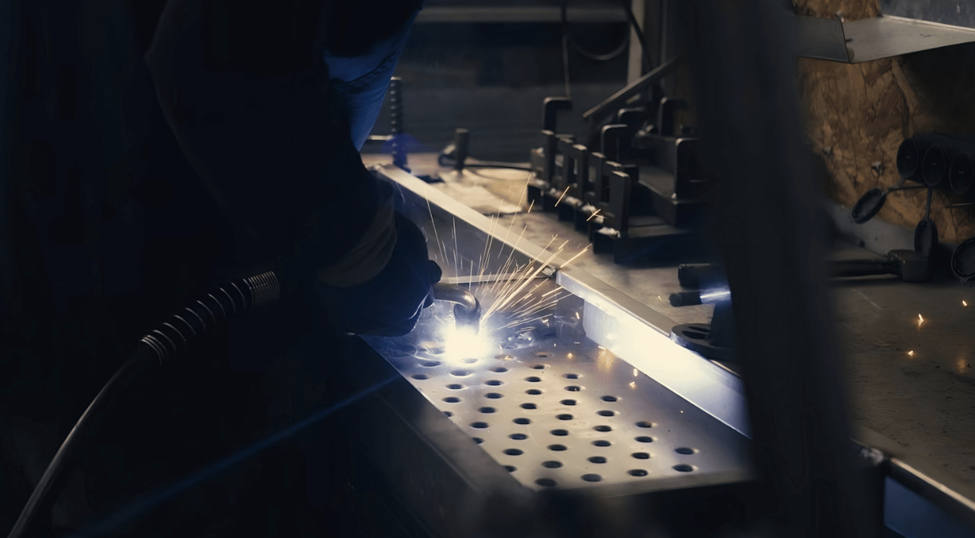The Smart Buyer’s Guide to Laser Welder Cost and Performance
- Staff Desk
- Sep 26
- 3 min read
Updated: Sep 30
When shopping for a laser welder, one of the biggest challenges is finding the right balance between price and performance. With models ranging from handheld units to fully automated robotic systems, costs can vary from just a few thousand dollars to several hundred thousand. The key is making sure you’re not overspending on features you won’t use—or underinvesting in a machine that won’t meet your production needs.
In today’s market, where accessibility is improving for small businesses as well as large-scale manufacturers, understanding how laser welder price aligns with capability is essential.

Price Ranges & What You Get
Entry-Level / Handheld Systems
Handheld fiber laser welders typically cost $2,000–$10,000. They’re portable, easy to set up, and ideal for:
● Jewelry and small metal art projects
● Prototyping and light repair work
● Thin-sheet applications where precision matters
Mid-Range Stationary & Benchtop Machines
Benchtop or stationary fiber systems usually fall between $30,000–$100,000+. These offer:
● CNC precision and repeatability
● Higher power for welding thicker materials
● Greater stability and automation
High-End / Industrial & Robotic Systems
Industrial systems can exceed $100,000–$300,000+, often featuring:
● Robotic integration and high-speed automation
● Specialized cooling and safety enclosures
● Multi-shift reliability for large production lines
Key Performance & Feature Factors That Drive Cost
Several technical features determine a laser welder's price:
●Laser Power / Output Rating – Higher wattage enables thicker material welding and faster speeds, but requires more expensive components.
● Laser Source Type – Fiber lasers generally cost more than CO₂ or diode lasers but provide superior efficiency and lifespan.
● Beam Quality & Optics – Precision optics improve weld quality but increase cost.
● Automation & Controls – CNC motion, robotic arms, or advanced software push prices up.
● Cooling Systems – High-power machines require advanced thermal management like water chillers.
● Brand & Support – A trusted brand with strong warranties and service will command a premium.
Costs Beyond the Sticker Price (True Cost of Ownership)
The purchase price is only part of the story. You should also consider:
● Operational Costs – Electricity, shielding gas (if needed), and consumables like lenses.
● Maintenance & Repairs – Calibration, optics replacement, and cooling system upkeep.
● Downtime – Higher-quality machines often minimize costly interruptions.
● Depreciation – Most machines lose 15–20% value per year, but well-maintained units hold resale potential.
Matching Price & Performance to Your Needs
Before buying, ask:
● What materials and thicknesses do you weld most often?
● Do you need portability or fixed automation?
● Is your production high-volume, or do you handle small custom jobs?
Tip: Avoid paying extra for power or automation you won’t use. If your shop primarily works with thin sheet metal, a mid-range benchtop unit could be the sweet spot.
Strategies to Find Good Value
To maximize ROI, consider these strategies:
● Compare multiple quotes and evaluate not just the machine but also service and support.
● Look into refurbished units with documented history for cost savings.
● Consider financing or leasing options to spread out investment while generating revenue.
● Seek modular designs that allow upgrades over time.

How Denaliweld Balances Laser Welder Price & Performance
If you’re evaluating laser welder price, Denaliweld offers a product line designed to meet different tiers of performance without overcharging for unused features. Whether you need a portable entry-level unit for small workshops or a high-capacity fiber laser for industrial production, their machines are engineered with:
● Energy efficiency to lower operating costs
● Reliable components that extend machine lifespan
● Strong warranty and service support to minimize downtime
By aligning features with business needs, they help you get the performance you require at a price that makes financial sense.
Conclusion
This buyer’s guide to laser welder cost helps you find the right balance between price and performance by making smart, informed choices. Overspending on features you’ll rarely use can erode ROI, while under-investing can limit productivity and growth. By carefully weighing application requirements, long-term operating costs, and support services, you can select a machine that delivers precision, efficiency, and durability. With providers like these, you don’t just buy equipment—you invest in lasting performance that aligns with your business goals.

Comments